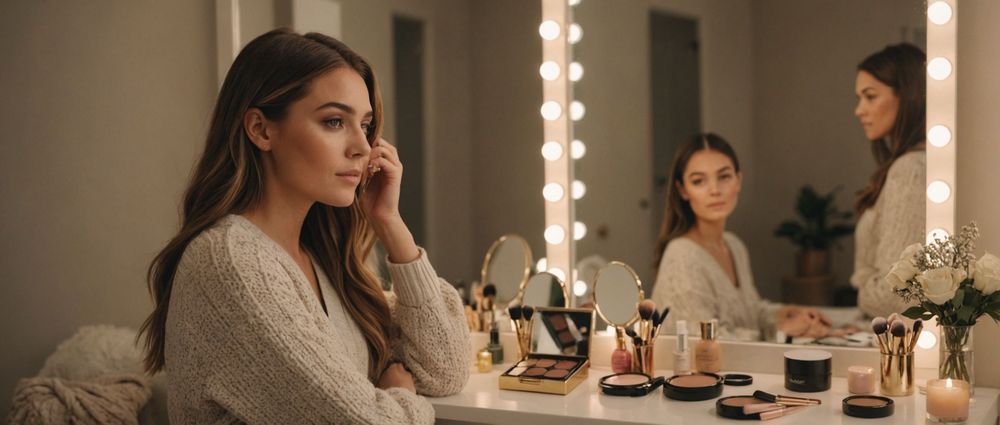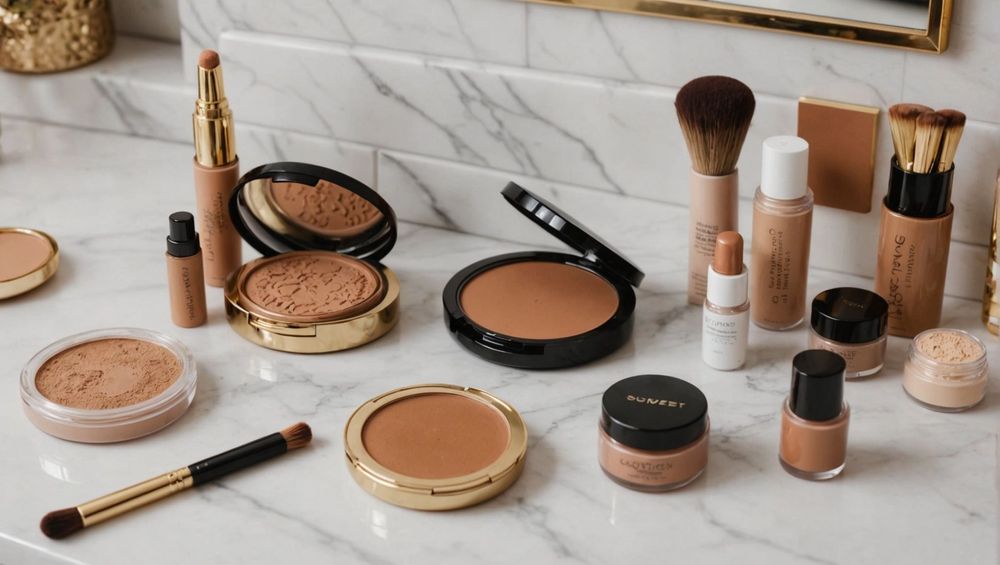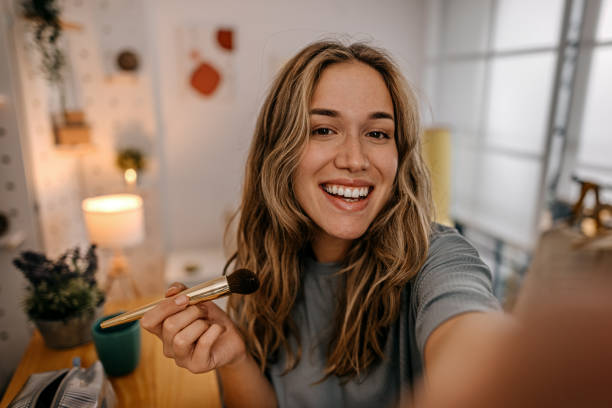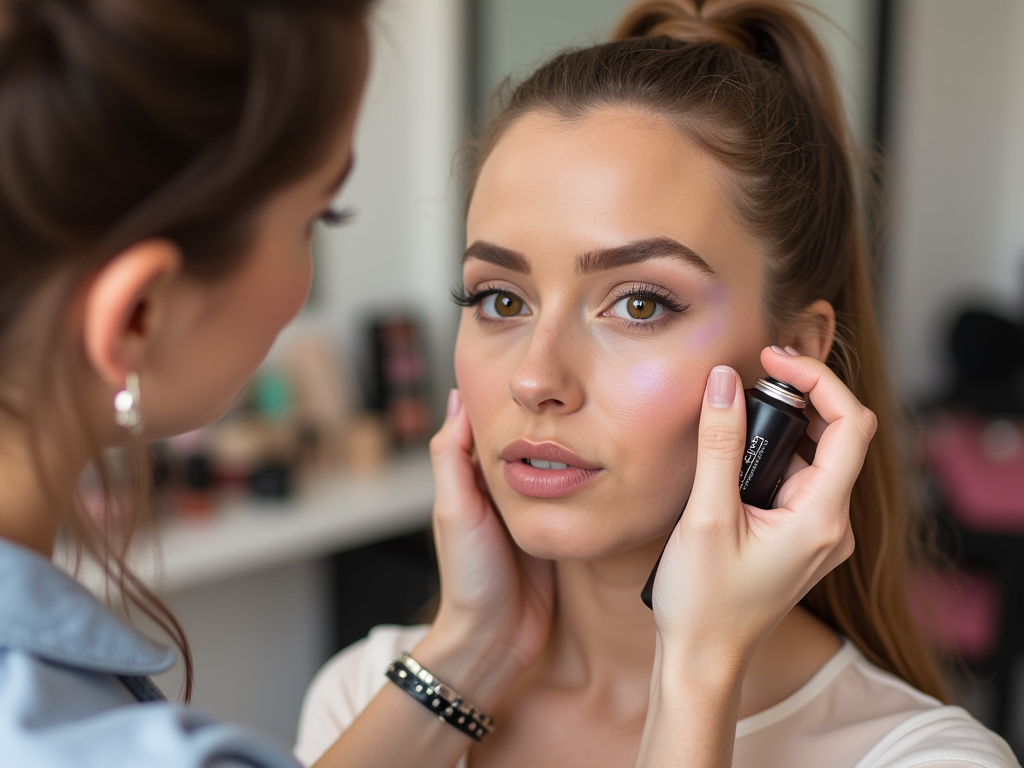Wearing bronzer in the winter can enhance your complexion, giving you a radiant, natural glow even on the coldest days. The key to achieving this look lies in choosing the right bronzer, applying it correctly, and blending seamlessly into your winter skincare routine. In this article, we’ll guide you through the best methods to incorporate bronzer into your winter makeup routine while keeping the appearance fresh and effortless. Whether you’re heading out for a winter outing or a cozy night in, you can easily achieve that sun-kissed look.
Choosing the Right Bronzer for Your Skin Tone

The first step to achieving a natural glow with bronzer is selecting the right shade that complements your skin tone. In winter, many people’s skin tends to be lighter, making it essential to choose a bronzer that adds warmth without looking too harsh or unnatural. Here are some tips to help you choose:
- Fair Skin: Opt for a bronzer with a soft, cool undertone or a light shade of liquid bronzer.
- Medium Skin: Look for a bronzer with warm undertones that has a gentle peach or gold tint.
- Deep Skin: Choose a rich, dark bronzer with deep warm tones, such as terracotta or mahogany.
Remember that a bronzer should enhance your natural complexion, so avoid products that are significantly darker than your skin tone.
Perfecting Your Base: Winter Skincare Prep
A smooth base is crucial for a flawless bronzer application. Winter can be harsh on the skin, often causing dryness. To prepare your skin, start with a good skincare routine that includes:
- Moisturizer: Use a rich, hydrating moisturizer suitable for winter weather.
- Primer: Apply a hydrating primer to create a smooth canvas for makeup.
- Sunscreen: Don’t forget to apply sunscreen even in winter, as UV rays can still affect your skin.
Allow your skincare products to absorb fully before applying any makeup, ensuring that your bronzer blends effortlessly into your skin.
Application Techniques for a Natural Finish
When it comes to applying bronzer in winter, a light hand and the right techniques are essential. Instead of a heavy application, aim for a subtle finish. Here are some effective application techniques:
- Using a Brush: Choose a fluffy bronzer brush and tap off excess product. Apply bronzer in a ‘3’ shape on your face, going from your forehead to your cheekbone and down to your jawline.
- Beauty Blender: For a more airbrushed look, use a damp beauty blender to gently press bronzer onto your skin, particularly if using a cream formula.
- Layering: Start with a light layer and gradually build up to your desired intensity, ensuring a natural blend.
This gradual application helps maintain an effortless appearance while keeping the focus on enhancing your features rather than overpowering them with makeup.
Where to Apply Bronzer for the Best Effect

To achieve a natural look, knowing where to apply bronzer is crucial. Rather than slathering it all over your face, focus on key areas to mimic where the sun would naturally hit. Here’s where to apply bronzer:
- Cheekbones: Apply bronzer just above your cheekbones for warmth.
- Forehead: Dust bronzer across your hairline to give dimension.
- Jawline: Lightly sweep bronzer along your jawline for definition.
- Nose: For a sun-kissed look, add a light touch of bronzer to the bridge of your nose.
Be sure to blend well, as harsh lines can detract from the natural radiance you’re aiming for.
Finishing Touches for a Flawless Look
After applying bronzer, it’s vital to incorporate finishing touches that enhance your overall appearance. Here’s how to elevate your bronzed look:
- Highlighter: Use a subtle highlighter on the high points of your face, such as cheekbones and the bridge of your nose, for a dewy effect.
- Setting Spray: A hydrating setting spray will lock in your look and help prevent your makeup from looking dull in the winter.
- Blush: Add a pop of blush to the apples of your cheeks for a fresh, youthful appearance.
These touches create a balanced and harmonious look, ensuring that your bronzer complements rather than competes with the rest of your makeup.
Conclusion
Wearing bronzer in the winter can transform your look, adding warmth and a radiant glow that defies the cold. By selecting the right shade, prepping your skin properly, mastering application techniques, and knowing where to apply bronzer, you can achieve a flawless finish. Lastly, remember to finish your makeup with thoughtful touches that enhance your features for a beautifully bronzed look throughout the winter months.
FAQs
1. Can I use bronzer in winter if I have dry skin?
Yes, using a cream or liquid bronzer can be beneficial for dry skin in winter, as it provides hydration while offering a natural glow. Be sure to prep your skin with moisturizer before application.
2. How do I prevent bronzer from looking patchy?
To avoid a patchy look, ensure your skin is well-hydrated and use a primer before applying bronzer. Additionally, blending well and building the product gradually can help achieve a smoother finish.
3. Should bronzer be darker than my foundation?
No, bronzer should generally be one or two shades darker than your foundation. This allows you to achieve a natural, sun-kissed look without harsh lines.
4. Can I wear bronzer alone without foundation?
Absolutely! You can wear bronzer alone for a more natural look. Just be sure to even out your skin with moisturizer or tinted moisturizer beforehand if needed.
5. How often should I replace my bronzer?
Bronzer typically has a shelf life of about 1-2 years. If you notice changes in texture or smell, it’s time to replace it to ensure skin health and safety.



